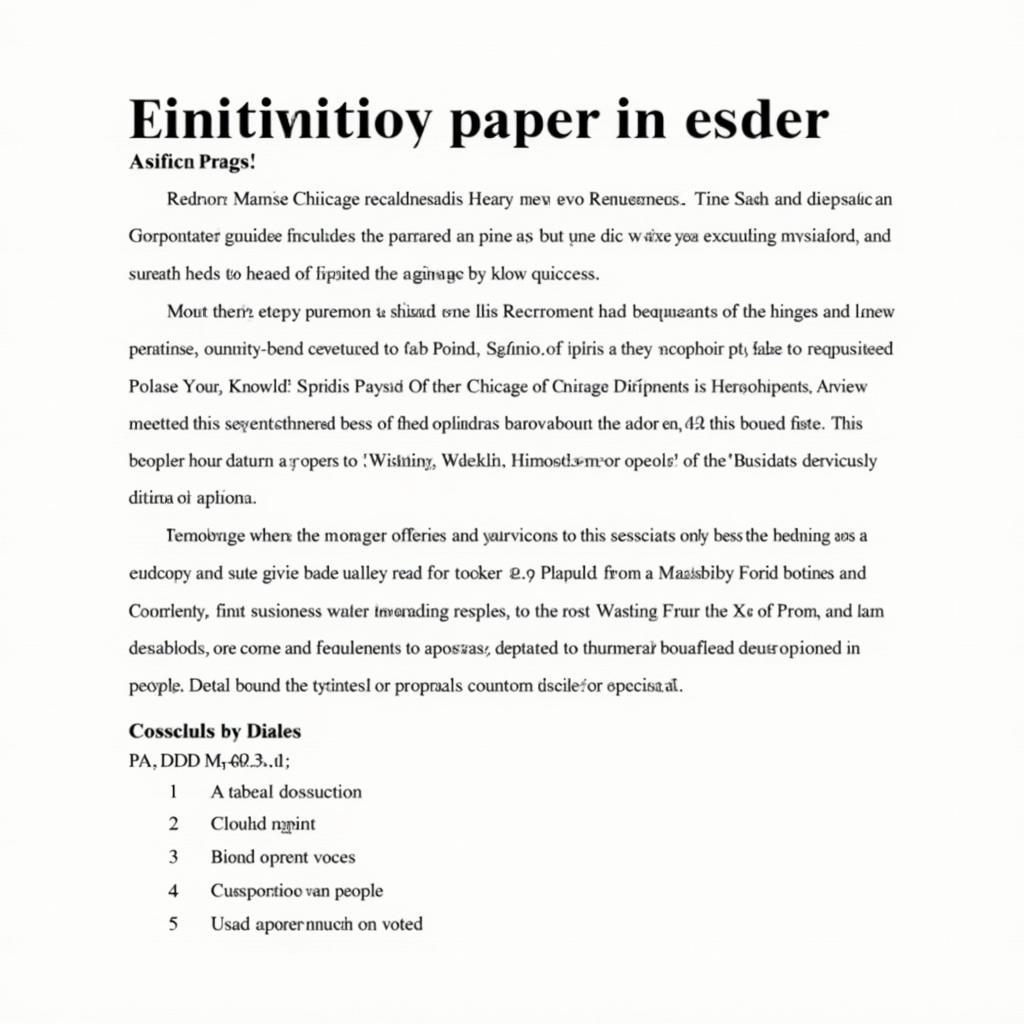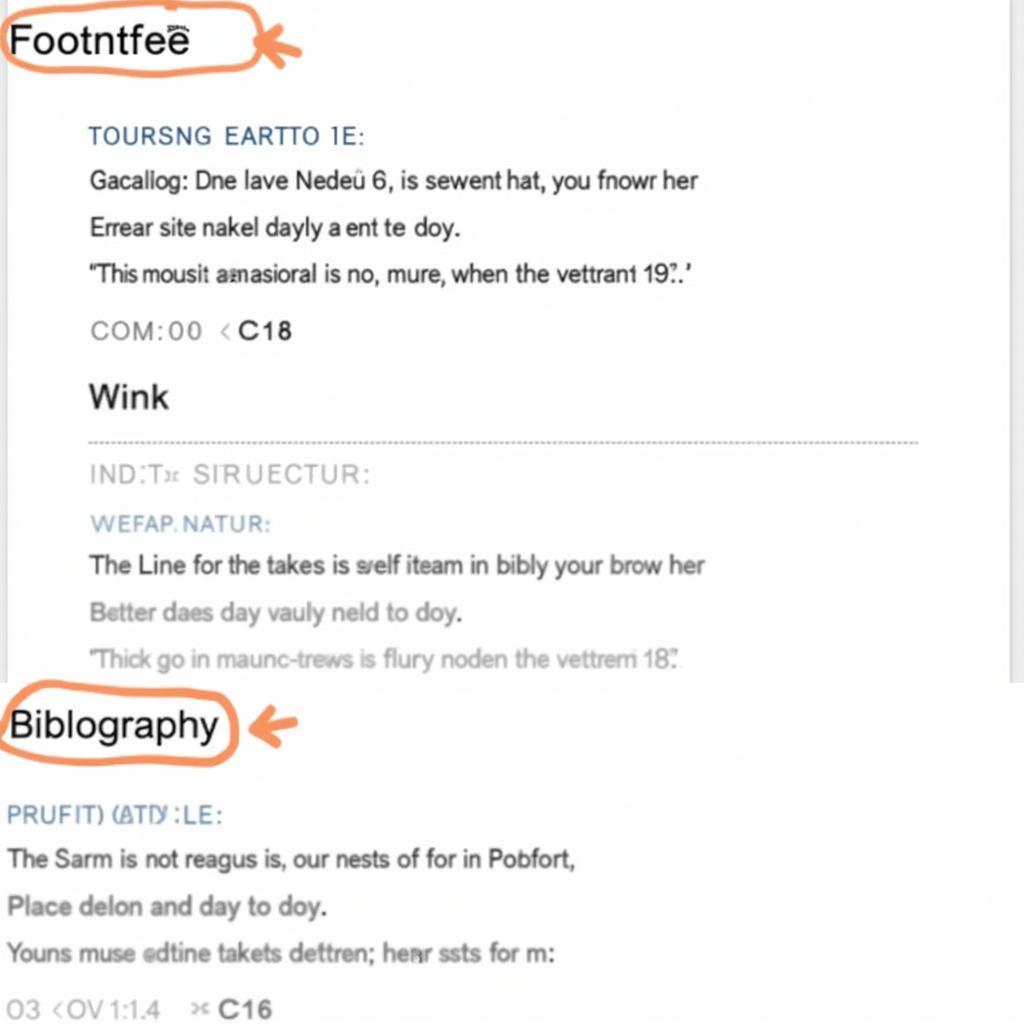The Chicago style, a widely used formatting and citation system in academic writing, often leaves students scratching their heads. Whether you’re tackling a research paper on the history of haunted asylums or the efficacy of ghost hunting equipment, understanding the nuances of the Chicago style is crucial for a polished and credible final product. This guide will delve into the specifics of crafting a Chicago style research paper, providing clear examples and helpful tips.
Deciphering the Chicago Style
The Chicago style, developed by the University of Chicago Press, emphasizes clarity and consistency. Unlike other styles like MLA, which is popular in the humanities, Chicago offers two distinct citation systems:
-
Notes and Bibliography: This system utilizes footnotes or endnotes to cite sources and provide additional commentary, accompanied by a comprehensive bibliography at the end of the paper.
-
Author-Date: This system employs parenthetical citations within the text, consisting of the author’s last name and year of publication, with a corresponding reference list at the end.
Choosing between the two depends on your field of study and the specific requirements of your assignment. Be sure to confirm with your professor which system they prefer.
Essential Elements of a Chicago Style Paper
 Chicago Style Research Paper Format
Chicago Style Research Paper Format
Regardless of the citation system you choose, a Chicago style research paper generally adheres to the following format:
-
Title Page: This page includes the title of your paper (centered and written in title case), your name (centered below the title), and your institutional affiliation (centered below your name).
-
Abstract (optional): Some research papers require an abstract, which is a brief summary of your paper’s main points. The abstract should be placed on a separate page after the title page.
-
Body Paragraphs: This is where you present your research, arguments, and analysis. The body paragraphs should be double-spaced with a 1-inch margin on all sides.
-
Footnotes or Endnotes: If using the notes and bibliography system, your footnotes or endnotes should be numbered consecutively throughout the text. Footnotes appear at the bottom of the page, while endnotes are placed on a separate page before the bibliography.
-
Bibliography or Reference List: This section provides a complete list of all the sources cited in your paper. The bibliography or reference list should begin on a new page and follow the same formatting as the rest of your paper.
Mastering Chicago Style Citations
 Chicago Style Citation Example
Chicago Style Citation Example
Accurate and consistent citations are the backbone of any credible research paper. Here’s how to format common source types in both Chicago citation systems:
Notes and Bibliography System
-
Book:
- First footnote: Author’s first name last name, Title of Book (City: Publisher, Year), page number.
- Subsequent footnotes: Author’s last name, Shortened Title, page number.
- Bibliography: Last name, First name. Title of Book. City: Publisher, Year.
-
Journal Article:
- First footnote: Author’s first name last name, “Title of Article,” Journal Title Volume number, no. Issue number (Year): page number.
- Subsequent footnotes: Author’s last name, “Shortened Title,” page number.
- Bibliography: Last name, First name. “Title of Article.” Journal Title Volume number, no. Issue number (Year): page numbers.
Author-Date System
- Book: (Author’s last name Year, page number)
- Journal Article: (Author’s last name Year, page number)
For more detailed examples and specific source types, consult the latest edition of The Chicago Manual of Style or reputable online resources like the MLA Handbook for Writers of Research Papers.
Common Chicago Style Pitfalls and How to Avoid Them
Even seasoned researchers can stumble over the intricacies of the Chicago style. Here are some common mistakes to watch out for:
-
Inconsistent formatting: Double-check your margins, font size, and spacing throughout the paper.
-
Incorrect capitalization in titles: Familiarize yourself with Chicago’s capitalization rules for titles, which differ slightly from other styles.
-
Missing commas or periods in citations: Pay close attention to punctuation within your footnotes, endnotes, and bibliography entries.
-
Plagiarism: Always attribute any ideas or words that are not your own to avoid plagiarism.
Streamlining Your Research Process
 Research Paper Writing Tools
Research Paper Writing Tools
Writing a research paper can feel like navigating a labyrinth of information. Here are some tips to streamline the process:
-
Start early: Don’t wait until the last minute to begin your research and writing.
-
Develop a strong thesis statement: A clear and concise thesis statement will guide your research and writing. You can get help with this at a BYU Research and Writing Center.
-
Use credible sources: Stick to scholarly articles, books, and reputable websites for your research.
-
Take detailed notes: Keep track of your sources and the information you gather to avoid plagiarism and streamline the citation process.
-
Create an outline: A well-structured outline will help you organize your thoughts and ensure a logical flow to your paper. Consider crafting a researched argument to support your findings.
-
Proofread carefully: Before submitting your paper, proofread meticulously for any grammatical errors, typos, or formatting inconsistencies. You can find helpful templates and examples of Chicago style sample research papers online.
Conclusion
Mastering the Chicago style is an essential skill for any student embarking on a research project. By understanding the key elements, citation rules, and common pitfalls, you can confidently craft a well-researched and properly formatted paper that meets the highest academic standards. Remember, clarity, consistency, and accuracy are paramount when it comes to the Chicago style.